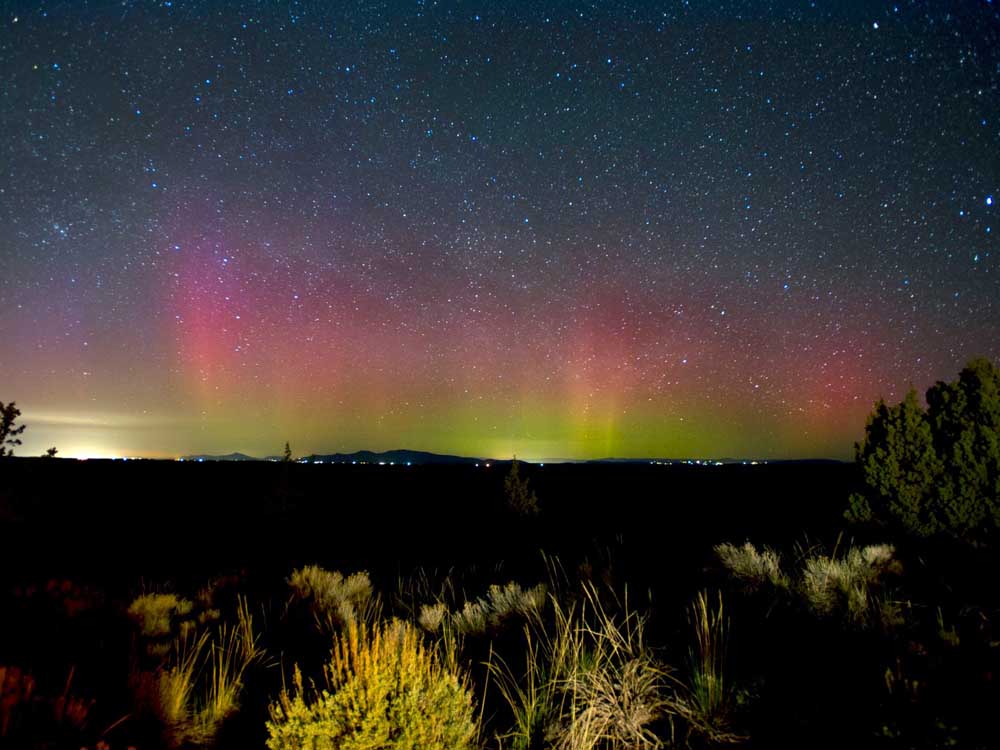Northern lights could be visible in Redmond Thursday evening, local experts on where to watch
Published 2:00 pm Tuesday, July 11, 2023

- In this 2015 Bulletin file photo, the colorful glow from the northern lights, caused by a solar storm, fills the sky over Redmond (glowing at left) and Central Oregon.
Drive just a few miles outside of Redmond Thursday night and you might glimpse the northern lights, a shimmering natural phenomenon that has historically been less visible in Central Oregon.
Also called aurora borealis, this display occurs when magnetic solar wind hits Earth’s magnetic field and results in glowing green-blue lights in the upper atmosphere.
Typically seen in northern-most regions of the globe, like Alaska, Canada or Scandinavia, there is a good chance that the upcoming solar storm could be more visible than usual in southern areas — including Bend.
Read more: Waterfalls Loop Trail on the McKenzie River is a summertime treat for hikers
While it is not rare to see a solar flare in Bend, the Earth is heading toward the end of an 11-year solar cycle, said Bob Grossfeld, and this means the sun is becoming even more active, making the northern lights especially significant as a result. Grossfeld is a NASA Solar System Ambassador and an instructor at Central Oregon Community College where he teaches astronomy.
Scott Fisher, director of Pine Mountain Observatory in Sunriver and astronomy lecturer at University of Oregon, said auroras are visible, on average, twice a year in Oregon.
Thursday is particularly special because folks in Central Oregon could have a better shot at seeing the lights, provided they seek out the right conditions, which Fisher said is easy to do in cities like Bend.
The best time to have a shot at viewing the lights is between 10 p.m. Thursday and 2 a.m. Friday. Fisher recommends people head to any dark, open horizon away from city lights to experience the aurora properly.
“Just head a few miles outside of Bend, or Redmond, Prineville, Madras,” Fisher said. “With the naked eye, look at the entire northern part of the sky in the lower horizon.”
He reminded viewers that the lights might not be as bright as they appear in photographs.
To keep track of the aurora and other planetary information, Grossfeld recommends using spaceweather.com.
Grossfeld said he likes heading up to snow parks near the mountains for a good view of the sky. His personal favorites are Kapka Butte Snow Park and Wanoga Snow Play Area.
“It’s a unique natural phenomenon that people all over the world chase,” Grossfeld said. “I think it’s a really beautiful thing, and with Central Oregon’s natural landscape, to see the lights over the mountains, or over Crater Lake, it’s just really special.”
Auroral activity has been forecast in 17 U.S. states, including Alaska, Oregon, Washington, Idaho and Montana.





